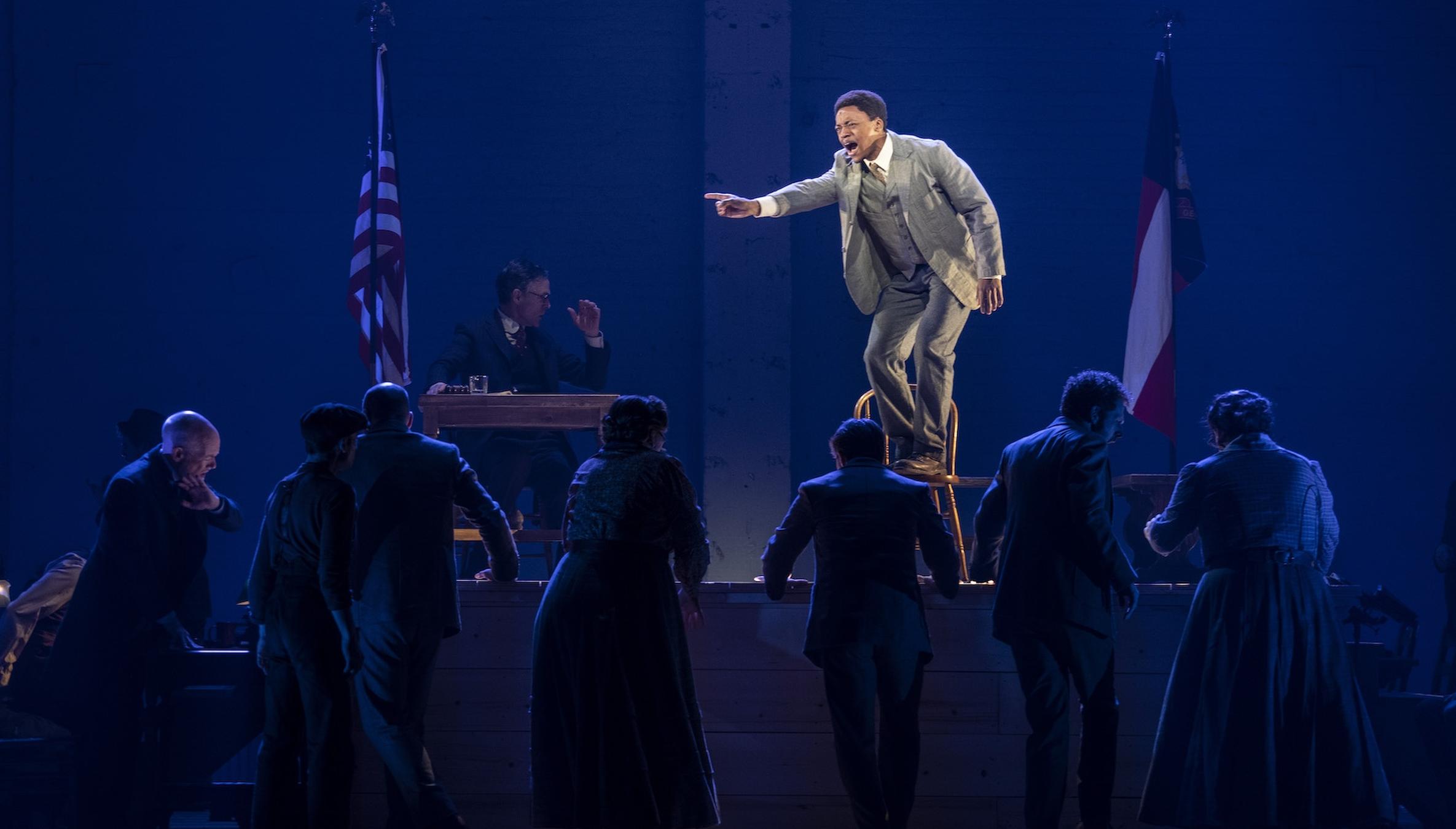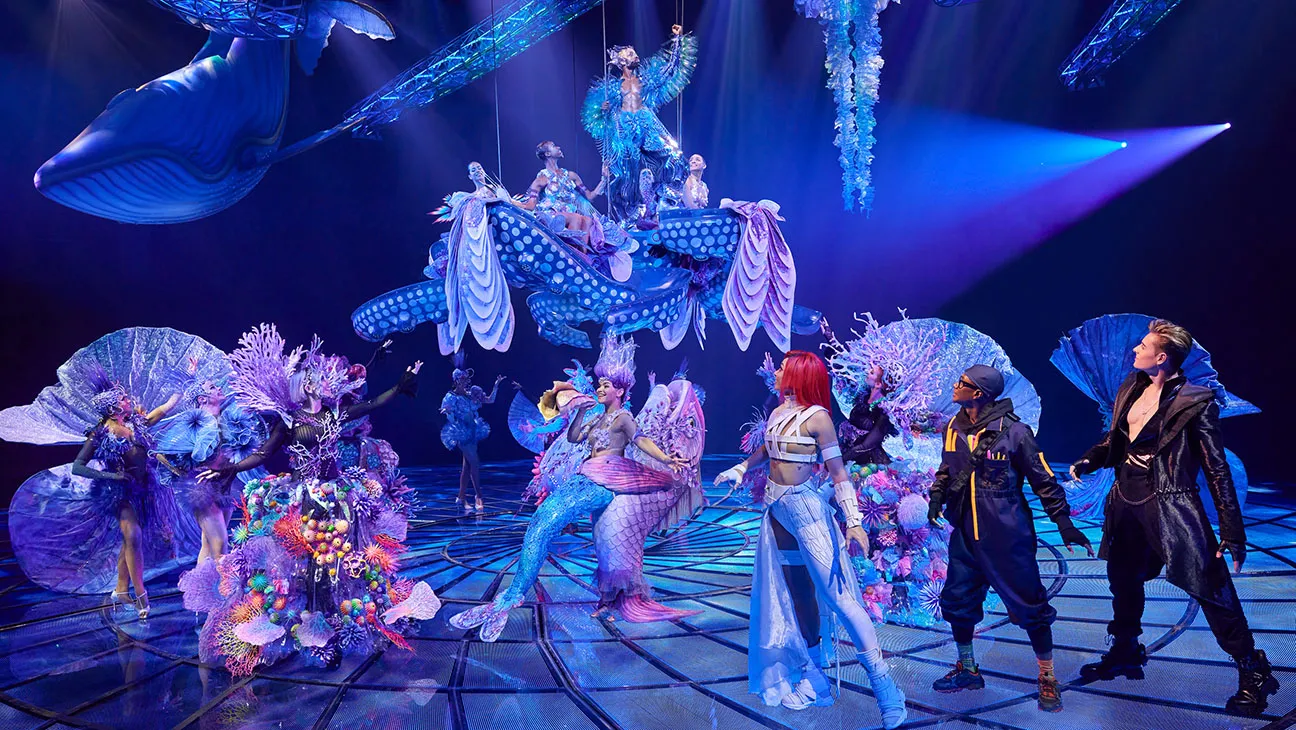Tech In Live Theater Production - Transforming The Stage With Innovation
Tech in live theater production is reshaping traditional boundaries and elevating the theatrical experience for performers and audiences.
Author:Darren McphersonReviewer:Anderson PattersonFeb 10, 20246.8K Shares274.6K Views

Tech in live theater productionis reshaping traditional boundaries and elevating the theatrical experience for performers and audiences.
From advanced lighting and sound systems to AR applications and software solutions, technology enhances creativity, efficiency, and production quality. This introduction explores the intersection of technology and live theater.
The Visual Appeal In Theater Production
The visual elements of a play or musical have a long history, with masks, scenery, and props playing a crucial role. Modern technology has made it easier for theaters to enhance the visual appeal of their productions, with automation and 3D printing allowing for faster set construction and more detailed content.
Video technology has also allowed for the incorporation of multimedia elements into performances, such as video backdrops and relevant clips.
Lighting has also been a significant aspect of the theatrical experience. Historically, theaters were constructed without a roof or relied on fire to illuminate the stage.
Limelight transformed the stage in the 19th century, but electrical lighting took its place in the 20th century.
Today's lighting is often operated using digital light boards, with the growing capabilities of LED lights and electrical systems making it easier for modern theaters to utilize specialized lighting systems.
Modern technology can alter the intensity, pattern, and color of lights with the press of a button or the turn of a dial.
Sound And Audio Effects
Production teams may now readily compose music and sound effects online, thanks to technological advancements that have a profound effect on viewers' aural experiences. Additionally, directors can overlay sounds in sound design packages to create effects and background noises that sound more genuine.
Actors may now use microphones to transmit their voices from speakers strategically positioned around the theater, which has completely transformed the way plays are performed.
Furthermore, artists may get high-quality sound without drawing attention to themselves by donning small microphones in the shape of flesh-colored headphones or tucking them into their hair.
Bruce Willis and other actors have utilized earpieces and on-stage monitors to feed their lines, which has affected not just the audience but also the performers. On the other hand, a lot of performers opt out of using them every time they perform.
Smell
Adding scent to the audience's experience is a big part of theater. Instead of the natural air absorbing scents like smoke and tobacco in the past, dry vapor scenting devices now allow producers to fill a theater with any scent they desire.
Diffusers like these vapor systems may emit fragrances at certain times, making sure that everyone is greeted with the right aroma. The audience may now pick the perfume they wish to use at a certain moment thanks to this technology, which gives a new way for theatrical companies to draw them further into the performance.
Audiences are able to fully immerse themselves in the performance, elevating the theatrical experience as a whole. To sum up, dry-vapor scenting systems have greatly improved the theatrical experience by enhancing the sense of smell inside the audience.
LED Lights
Traditional lighting systems have long been used in theaters, but they were time-consuming to set up. LEDs, which were introduced in 2007, provided a wider range of color options and improved the lighting experience in theaters.
They were originally used for background surfaces and other supplementary areas but have since gained popularity due to their ability to change colors using digital lighting processes.
LED lights include built-in dimmers that can be controlled remotely, and they are available in a variety of shapes and sizes, including strip lights, moving head lights, and PAR cans.
Lighting engineers can control the lighting on a stage using digital lighting, which is connected via a digital network. Light operators can now control lighting over a network using a control station, which is often integrated with a theater's dimmer and on/off controls.
Designers can use digital lighting to control the patterns, intensity, imagery, and colors of light that is projected on stage. This enables a single operator to control hundreds of lights from a digital light board, saving time and expanding the stage's capabilities.
Sound design technology has advanced significantly in theater, particularly in speaker systems and microphones. Previously, a production team had to manually control spotlights, but digital lighting allows a single operator to control hundreds of lights from a single location, saving time and expanding the stage's possibilities. Overall, LED lighting has transformed theatrical lighting and production processes.
Microphone Technology Improving Live Performances
In the 1960s, musicals used microphones to help singers overpower the orchestra. Microphones were often placed at the front of the stage and hung from the fly loft to pick up sound downstage and upstage without distracting. These microphones limited singers mobility by requiring them to sing directly in front of them.
The 1980s saw the development of miniature wireless mics, which improved performance and sound. These mics sent a signal to a mixing desk via an FM radio transmitter on the actor. Modern wireless mics, mounted on a headset with a flesh-colored mouthpiece or in the actor's hair, produce excellent sound.
System Speakers
Developing amplifiers, speaker enclosures, and loudspeakers changed theater. Theaters could play music and sound effects while actors spoke through microphones.
Theaters could play music and effects from one location, thanks to speaker systems. Modern productions can fill a theater with sound using portable loudspeakers. Speaker systems make modern stages more realistic and immersive.
Theaters can now have one person coordinate and perfect a production's sound with modern speaker systems. A sound operator can control an actor's mic level, sound effects, and production music using a mixing desk.
3D Printing Is Revolutionizing Theater
3D printing is revolutionizing set design and stage performances by reducing the time spent on painting backdrops and building sets. Set designers now design sets in 3D software before printing plastic prototypes, allowing them to experiment with different designs and make set changes quickly.
This technology was introduced to the theatre industry by Owen Collins, Associate Professor at Washington and Lee University, in 1999. The technology has made it a viable option for set and prop design, allowing designers to create prototypes online and send them to be printed off in plastic form. This process saves time and effort, helping set designers meet tight deadlines.
3D printing can also help production teams manufacture film props en masse, as seen in a Baylor University production of "Into the Woods." Traditional prop and costume design can be limited to what can be found left lying around, but 3D printing allows for props and items to be made out of a digital "ball of clay," with the only limitation being the designer's imagination.
Automation
Automation with cable systems, motors, electronic control boxes, and software lets theaters move set pieces at optimal times. This technology lets directors design complex stages and create smooth transitions. Stagehands, who used to force sets, find it easier.
From Broadway to high schools and community theaters, automation is everywhere. Automation will remain popular on the stage for years to come due to the appeal of pressing a button to trigger exact scenic choreography for every performance.
Detailed documentation of the counterweight rigging system dates back to the 16th century. These systems have improved in safety and performance over time. Counterweight stage rigging is still common, but automated stage rigging is becoming more popular in theater technology. Stage rigging automation uses electrical winches to move line sets instead of hoists.
Modern rigging systems use motors. Scene changes and actor lifts used to require stagehands to manually operate the rigging. After programming, motorized stage rigging can perform these tasks autonomously. These capabilities allow theaters to free up staff and let directors be creative with rigging to enhance the performance.
Cues Effects
Theaters use cues to time actions. This can be a sound effect, a lighting change, a movement, or a verbal signal. Movie theaters have more cue options with modern monitors, headsets, and lights. Stagehands can wear headsets, and the stage manager can use them to communicate during a performance to keep things running smoothly.
Propmaking is easier thanks to technology. Props can be made faster and more accurately with 3D technology. This lets set designers experiment with new designs and use more props. Instead of making or finding props, they can draw and print them. Designers can make more props with the same quality by streamlining the process.
FAQs - Tech In Live Theater Production
How Is Technology Integrated Into Live Theater Production?
Technology in live theater production is seamlessly integrated through various means, including advanced lighting systems, sound effects, projection mapping, and interactive set designs. These technologies enhance the overall theatrical experience for both performers and the audience.
What Role Does Augmented Reality (AR) Play In Live Theater?
Augmented reality in live theater adds an extra layer of digital information to the physical world, enhancing visuals and providing interactive elements. This technology is utilized to create immersive scenes, dynamic stage effects, and even interactive audience experiences.
How Have Advancements In Sound Technology Impacted Live Theater Performances?
Recent advancements in sound technology have significantly improved the audio quality in live theater. High-quality sound systems, directional audio, and spatial audio technologies contribute to a more immersive and dynamic auditory experience for the audience.
Are There Specific Software Applications Designed For Live Theater Production Management?
Yes, there are specialized software applications designed for managing various aspects of live theater production. These tools help with tasks such as scheduling, script management, stage design, and communication among the production team members.
In What Ways Does Tech Enhance The Rehearsal Process In Live Theater?
Technology aids the rehearsal process in live theater by offering virtual rehearsal platforms, digital script annotation tools, and communication apps. These tools streamline collaboration, allowing performers and directors to work together efficiently, even if they are physically apart.
Final Words
Tech in live theater production has become a crucial partner, enhancing creativity and audience engagement through seamless soundscapes and visual effects.
As innovations emerge, the theatrical landscape evolves, offering more immersive experiences. The synergy between technology and live theater production will chart new territories, ensuring the magic of the stage remains in the digital age.

Darren Mcpherson
Author
Darren Mcpherson brings over 9 years of experience in politics, business, investing, and banking to his writing. He holds degrees in Economics from Harvard University and Political Science from Stanford University, with certifications in Financial Management.
Renowned for his insightful analyses and strategic awareness, Darren has contributed to reputable publications and served in advisory roles for influential entities.
Outside the boardroom, Darren enjoys playing chess, collecting rare books, attending technology conferences, and mentoring young professionals.
His dedication to excellence and understanding of global finance and governance make him a trusted and authoritative voice in his field.

Anderson Patterson
Reviewer
Anderson Patterson, a tech enthusiast with a degree in Computer Science from Stanford University, has over 5 years of experience in this industry.
Anderson's articles are known for their informative style, providing insights into the latest tech trends, scientific discoveries, and entertainment news.
Anderson Patterson's hobbies include exploring Crypto, photography, hiking, and reading.
Anderson Patterson's hobbies include exploring Crypto, photography, hiking, and reading.
In the Crypto niche, Anderson actively researches and analyzes cryptocurrency trends, writes informative articles about blockchain technology, and engages with different communities to stay updated on the latest developments and opportunities.
Latest Articles
Popular Articles
